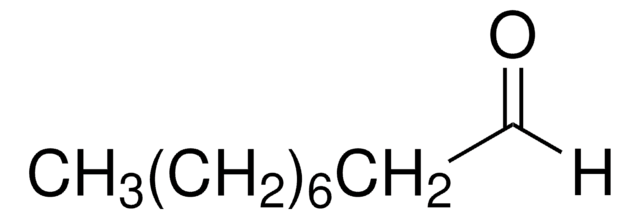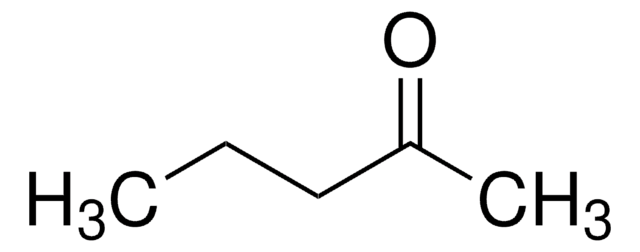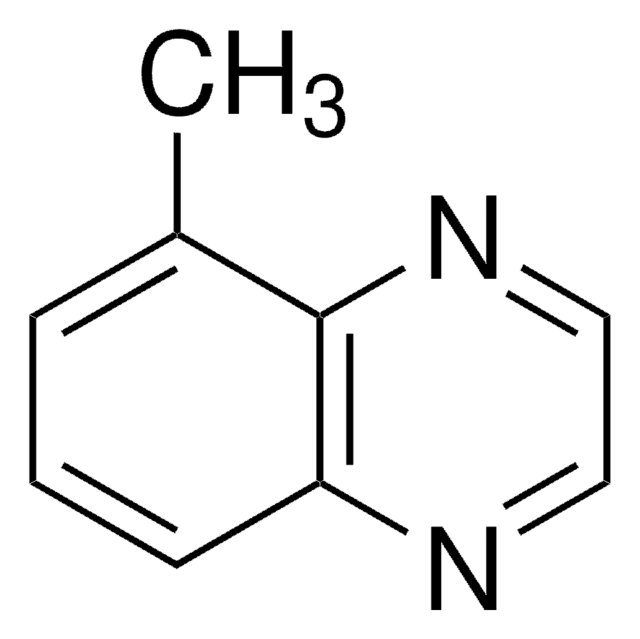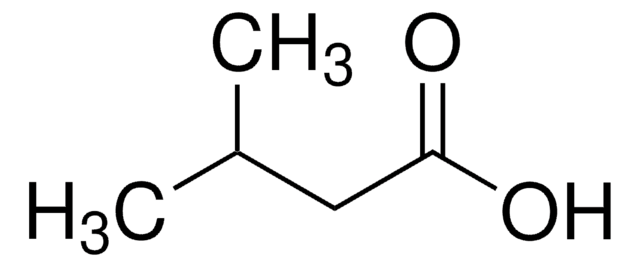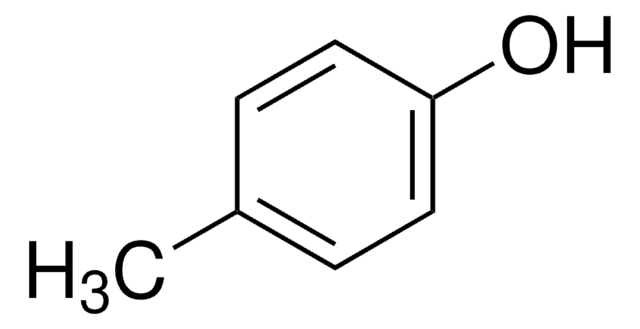Kluczowe dokumenty
W278505
2-Nonanone
≥99%, FCC, FG
Synonim(y):
Heptyl methyl ketone
About This Item
Halal
Kosher
Polecane produkty
pochodzenie biologiczne
synthetic
Poziom jakości
klasa czystości
FG
Halal
Kosher
agency
meets purity specifications of JECFA
zgodność regionalna
EU Regulation 1334/2008 & 178/2002
FCC
FDA 21 CFR 172.515
Próba
≥99%
współczynnik refrakcji
n20/D 1.421 (lit.)
bp
192 °C/743 mmHg (lit.)
mp
−21 °C (lit.)
gęstość
0.82 g/mL at 25 °C (lit.)
Zastosowanie
flavors and fragrances
Dokumentacja
see Safety & Documentation for available documents
alergen pokarmowy
no known allergens
Organoleptyczne
green; herbaceous; fruity; sweet
ciąg SMILES
CCCCCCCC(C)=O
InChI
1S/C9H18O/c1-3-4-5-6-7-8-9(2)10/h3-8H2,1-2H3
Klucz InChI
VKCYHJWLYTUGCC-UHFFFAOYSA-N
Szukasz podobnych produktów? Odwiedź Przewodnik dotyczący porównywania produktów
Zastosowanie
- Antifungal activity of bio-active cell-free culture extracts and volatile organic compounds (VOCs) synthesised by endophytic fungal isolates of Garden Nasturtium.: This research highlights the antifungal properties of 2-Nonanone, demonstrating its potential in biological control and offering an alternative to chemical pesticides in agricultural practices (Santra et al., 2024).
Inne uwagi
Zwroty wskazujące rodzaj zagrożenia
Zwroty wskazujące środki ostrożności
Klasyfikacja zagrożeń
Aquatic Chronic 3
Kod klasy składowania
10 - Combustible liquids
Klasa zagrożenia wodnego (WGK)
WGK 1
Temperatura zapłonu (°F)
147.2 °F - closed cup
Temperatura zapłonu (°C)
64 °C - closed cup
Środki ochrony indywidualnej
Eyeshields, Gloves, type ABEK (EN14387) respirator filter
Wybierz jedną z najnowszych wersji:
Masz już ten produkt?
Dokumenty związane z niedawno zakupionymi produktami zostały zamieszczone w Bibliotece dokumentów.
Klienci oglądali również te produkty
Nasz zespół naukowców ma doświadczenie we wszystkich obszarach badań, w tym w naukach przyrodniczych, materiałoznawstwie, syntezie chemicznej, chromatografii, analityce i wielu innych dziedzinach.
Skontaktuj się z zespołem ds. pomocy technicznej

